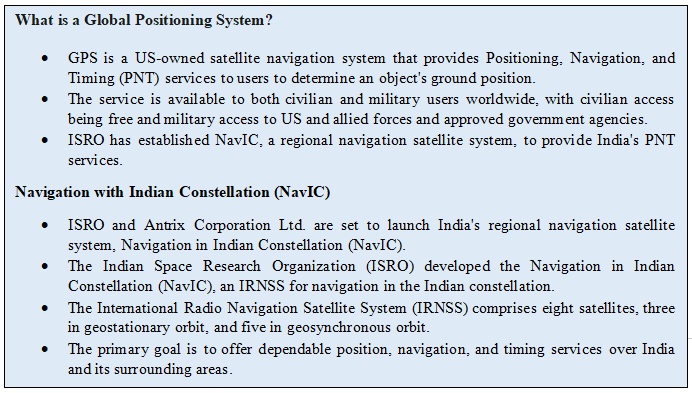- Courses
- GS Full Course 1 Year
- GS Full Course 2 Year
- GS Full Course 3 Year
- GS Full Course Till Selection
- MEP (Mains Enrichment Programme) Data, Facts
- Essay Target – 150+ Marks
- Online Program
- GS Recorded Course
- NCERT- First Ladder
- Polity
- Geography
- Economy
- Ancient, Medieval and Art & Culture AMAC
- Modern India, Post Independence & World History
- Environment
- Governance
- Science & Technology
- International Relations and Internal Security
- Disaster Management
- Ethics
- Current Affairs
- Indian Society and Social Issue
- CSAT
- 5 LAYERED ARJUNA Mentorship
- Public Administration Optional
- ABOUT US
- OUR TOPPERS
- TEST SERIES
- FREE STUDY MATERIAL
- VIDEOS
- CONTACT US
Global Positioning System Tracker Anklet
Global Positioning System Tracker Anklet
15-11-2023

Why in News?
Recently, A Jammu and Kashmir prisoner was released on bail after wearing a GPS tracker anklet to monitor his movements.
- The country has experienced its first use of a GPS tracker for this purpose.
GPS Tracker Anklets
-
About:
- GPS anklets are wearable devices attached to the ankles of individuals under legal supervision, such as parole, probation, house arrest, or bail.
- GPS anklets and bracelets are devices that can be worn on the ankle or arm of a person.
- The devices have a battery life of several days and can be recharged by the wearer.
- GPS anklets can be utilized to enforce court-imposed curfews, travel restrictions, or other conditions imposed by the supervising agency or court.
-
Working Procedure:
- GPS anklets utilize GPS technology to provide real-time location tracking, enabling law enforcement and security agencies to monitor their movements in real-time.

-
GPS Anklets usage on Prisoners:
- GPS anklets are being used to reduce criminal justice costs by reducing prison overcrowding and directing resources towards serious offenses.
- The organization ensures public safety and rehabilitation by deterring crime, promoting law compliance, and fostering offender well-being through family ties, education, and support services.
-
Legal Position on the Use of GPS Anklets Globally:
- GPS trackers are mandatory for bail in the United States, the United Kingdom, and Malaysia.
-
Concerns Regarding the GPS Anklets in India:
- Rights activists argue that GPS tracking of individuals violates their fundamental right to privacy and dignity of offenders.
- The Supreme Court of India, in the case of 'Maneka Gandhi vs Union of India' (1978), affirmed that the right to life encompasses human dignity.
- GPS anklets in India pose legal and ethical concerns due to the absence of clear regulations and laws governing their usage.




